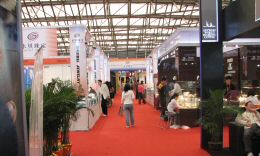 |
Emphasizing custom-design work, like this ring in progress, above, from Gholson Originals Fine Jewelry in Waco, Texas, is helping some retailers navigate the tough economic times. |
Sticking with tried-and-true merchandise, plunking down money on advertising and sharpening customer service are just a few of the tactics being employed by retailers to get through these tough economic times, which analysts predict will ultimately be labeled a U.S. recession.
On an April day at Baker and Baker Jewelers in Marietta, Ohio, Larry Hall had made three deliveries by noon, and planned another 30-mile trek that day, all in the name of keeping customers happy.
The motto at the jewelry store, which has weathered its own share of recessions during its 142 years in business: "If there's a recession, we're not participating," says Hall, who has run the business for 17 years.
One of his morning deliveries involved a $2,000 pair of turquoise earrings he had sold to a customer only to find that one of the stones was loose. After the store made the repair, Hall hand-delivered the earrings, plus a gift certificate for one of the best restaurants in town, to the man's office.
"When you do get a little nibble, you run with it," Hall says.
At Nielsen's Jewelers in Portland, Ore., Jan Corbin is doing the same.
She says she recently sold a clock to a customer, who broke the item upon reaching home. Though it was not the store's fault, the jeweler offered to ship the clock back to the manufacturer as a convenience to the customer, who will pay for the repair.
"You take care of them, or they'll go somewhere else," Corbin says. "Don't drop the ball."
Nielsen's sales were up 50 percent in December 2007 and rose 7 percent for the entire year. Sales are down only slightly in the first three months of this year. Given the economic climate, that's a strong showing, and Corbin attributes it to custom work.
Her strategy: don't overbuy; instead, remain stocked up on practical items such as bridal and anniversary jewelry. However, one area where Corbin—the fourth generation to run the 116-year-old family-owned store—won't be cutting back is advertising.
"You have to get all you can," she says.
Like Corbin, Hall says he doesn't believe in cutting back on advertising just because the economy is in a slump.
Coleman Clark of B.C. Clark in Oklahoma City agrees. His store has been in business, and in the family, since 1892.
Clark is maintaining advertising in television, print and billboard, and on the Web sites of a local television station and a local radio station.
"There are still people shopping, and if you don't have your name out there, they'll go somewhere else," he says.
 |
Reaching out to potential customers and adding an artistic flair to its jewelry display cases led Gregory's in Salado, Texas, to the best March in its 30-year history. |
Like Corbin, Clark says he is keeping "fast-turn" merchandise in stock such as diamond stud earrings, watches and lines by popular designers such as David Yurman and Roberto Coin.
His advice to jewelers: Avoid opening new lines or sinking a large amount of capital into inventory when times are tough.
At Gregory's in Salado, Texas, Carolyn Dachs brainstormed with her staff on how to improve business after a weak January and February.
Their solution was to redesign the display cases with a more artistic flair and reach out to potential customers—those who had visited the store and left their contact information—via phone and e-mail. So far, the strategy is working: Dachs just recorded her best March in history.
Going forward, though, Dachs is strictly limiting what she will buy for the year.
"I don't know where the economy is going and I'm not buying inventory," Dachs says. "I'm just not buying anything."
Meanwhile, at Leonard's Jewelers in Mount Airy, N.C., Walter Leonard Jr. is buying in bulk.
But it's not new merchandise that's keeping this 115-year-old store afloat.
Leonard says times are especially hard in his area, which has been impacted by the loss of manufacturing jobs.
People are looking for ways to turn their possessions into cash, so his store is concentrating on the buying and reselling of previously owned jewelry.
Leonard says this strategy has been working well for his store; sales were up about 20 percent over the holidays and they are up slightly this year.
As the store focuses on this area, Leonard, who has run the business for 55 years, is stepping back on advertising.
He says the store has done less advertising in recent years, in general, as newspaper advertising rates have increased dramatically.
"We just don't get the results from it [like we used to]," he says. "I feel that after 115 years, they sort of know where we are."
At Gholson Originals in Waco, Texas, Bob Gholson also doesn't advertise much, just in the local magazine.
He says word-of-mouth has worked well for the business, and adds that during slow times, the store keeps itself busy with repair and custom-design work.
Tips on navigating slow retail waters —Emphasize customer service. Give 110 percent to those customers who are buying.
—Keep on advertising. It might be tempting to cut back, but there are still people out there shopping.
—Maintain a positive attitude. And ensure the sales staff is similarly upbeat when dealing with customers.
—Stick with staples. You can't go wrong with traditional pieces such as diamond stud earrings and bridal.
Source:
nationaljewelernetwork






 Darin L. Kath has resigned as president and chief executive officer of
Darin L. Kath has resigned as president and chief executive officer of 
 A blue diamond of 13.39cts became the most important colored diamond sold at auction anywhere in the world during the past 10 years, according to
A blue diamond of 13.39cts became the most important colored diamond sold at auction anywhere in the world during the past 10 years, according to 







